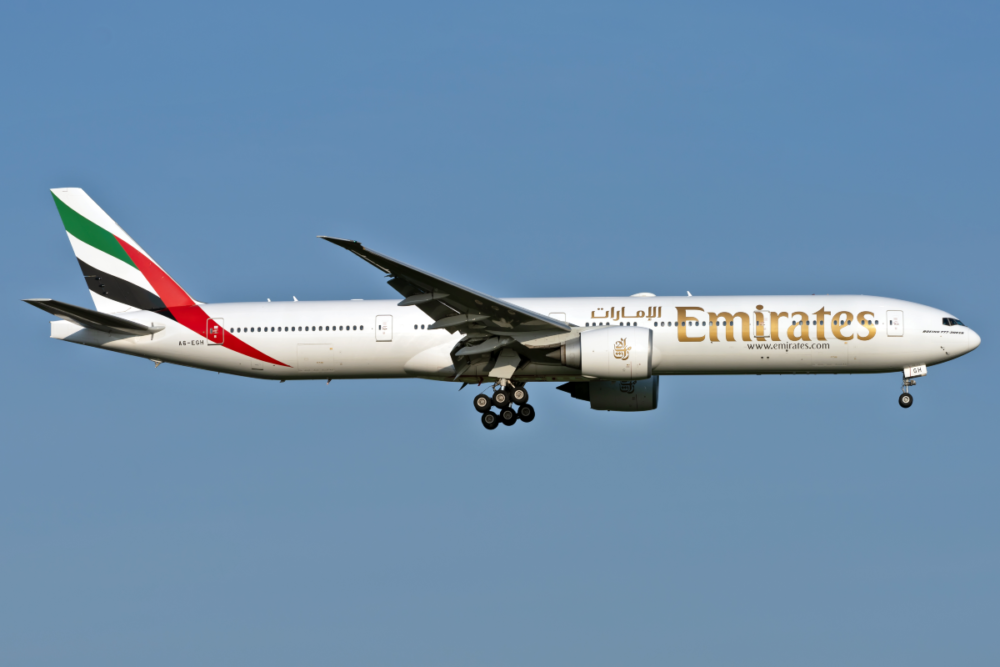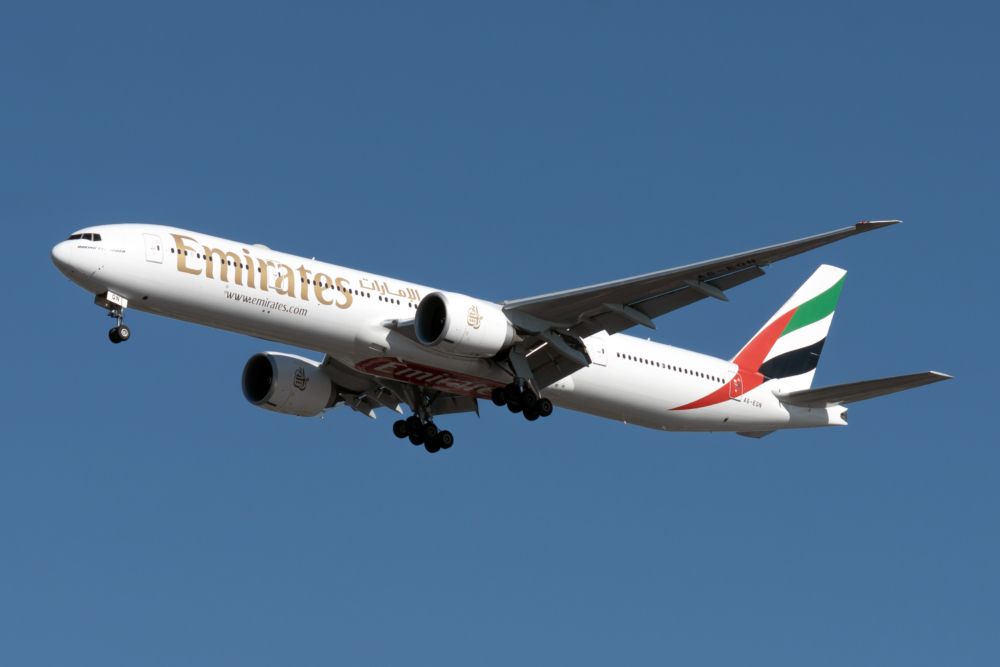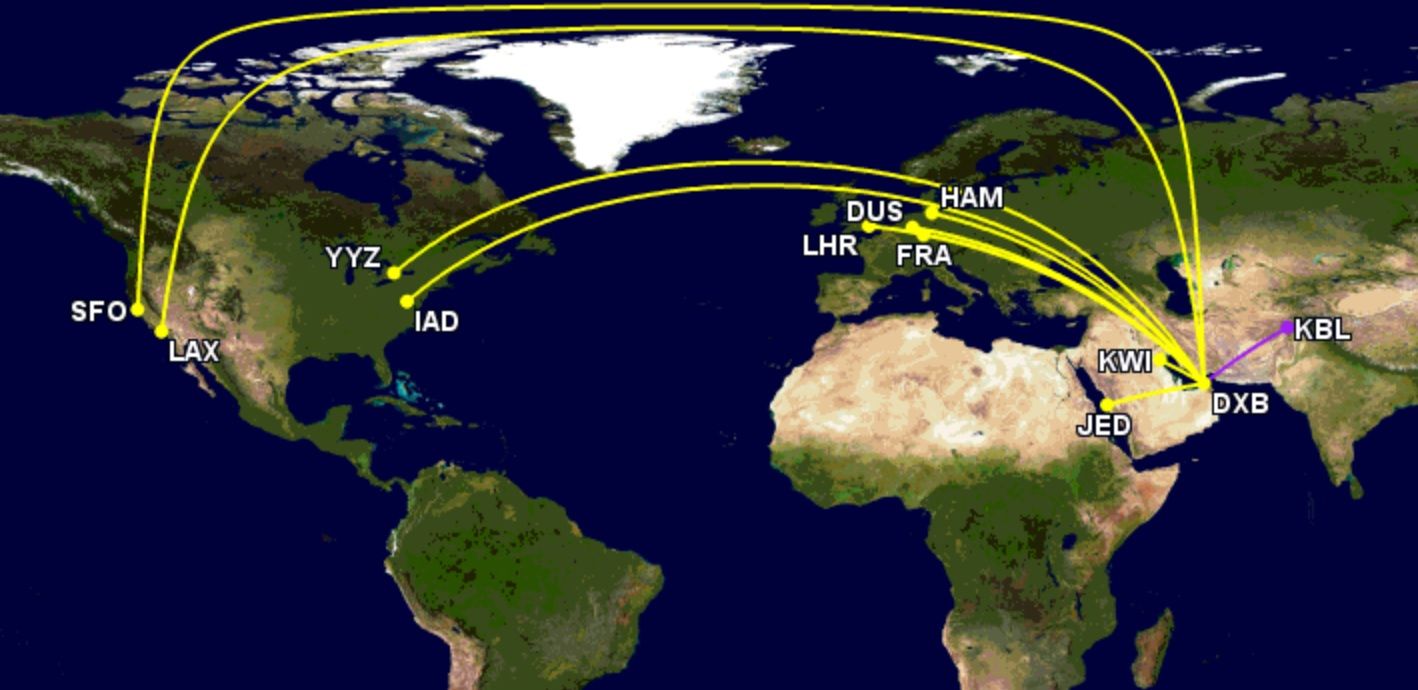Emirates had anticipated resuming its once-daily Dubai to Kabul service from July 1st, but it has been pulled. There is no indication if or when it'll return. However, the 1,048-mile (1,686km) airport-pair remains served by three carriers, including Emirates' narrowbody partner, flydubai, later this year.
It comes as Emirates makes numerous changes to its network, which suggests that its optimism, as laudable as it is, maybe less warranted than hoped. It has, for example, removed the A380 from eight cities, made 12 other significant changes to its A380 network, and slashed New Zealand flights.
Emirates pulls Kabul
Emirates inaugurated Kabul in December 2013, three and a half years after flydubai introduced it. Until July 2016, Emirates exclusively deployed the A340-300 and A340-500 quadjets to the Afghan capital, with the B777-300ER (and occasionally the B777-200LR) then taking over.
Emirates ceased serving Kabul in August 2021. It was obviously because Afghanistan fell to the Taliban, which meant operators, including Turkish Airlines, also ended flights.
Emirates had expected to reintroduce Kabul on July 1st, but it no longer will. According to OAG, the schedule was as follows, with all times local. The 354-seat B777-300ER was to be deployed. Depending on the exact configuration, they'd have six or eight first class seats, 42 in business, and 306 in economy.
- Dubai to Kabul: EK640, 10:50-14:30
- Kabul to Dubai: EK641, 16:20-18:45
Stay aware: Sign up for my weekly new routes newsletter.
Emirates' Kabul passengers
According to booking data, Emirates transported approximately 246,000 passengers to/from Kabul in 2019, the last normal year. It had about a 91% seat load factor, although as always, that says nothing of fares or overall performance.
As Kabul-Dubai is such a sizable point-to-point market, it's not surprising that nearly four in ten passengers (38%) only flew between the two cities. They didn't connect. However, six in ten (61%) did transit Dubai, with the remaining 1% connecting in both Dubai and Kabul. Jeddah-Dubai-Kabul-Kandahar was by far the largest 'bridging' market.
Booking data shows that Emirates' largest Kabul country markets were the US, UK, Germany, Saudi Arabia, Australia, Canada, Kuwait, Sweden, China, and Belgium. If origins and destinations (O&Ds) are examined, Kabul over Dubai to/from Jeddah was top, followed by London Heathrow, Washington Dulles, San Francisco, Frankfurt, Hamburg, Toronto, Los Angeles, Düsseldorf, and Kuwait.
But, still three airlines
Despite no Emirates, Dubai-Kabul is still served by Ariana Afghan (1x daily, B737-400) and KAM Air (1x daily, A340-300). They'll be joined by flydubai from October 30th (2x daily, B737-800).
The 4x daily is half of what was offered in winter 2019, not just because of no Emirates but also flydubai down by 2x daily and KAM down by 1x daily. Whatever else COVID has taught us, it is that much can and will change.
Are you planning to fly to Dubai this year? Let us know in the comments.



